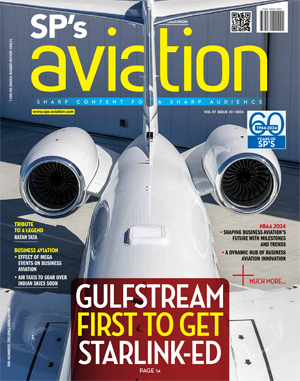INDIAN ARMED FORCES CHIEFS ON OUR RELENTLESS AND FOCUSED PUBLISHING EFFORTS

SP Guide Publications puts forth a well compiled articulation of issues, pursuits and accomplishments of the Indian Army, over the years

"Over the past 60 years, the growth of SP Guide Publications has mirrored the rising stature of Indian Navy. Its well-researched and informative magazines on Defence and Aerospace sector have served to shape an educated opinion of our military personnel, policy makers and the public alike. I wish SP's Publication team continued success, fair winds and following seas in all future endeavour!"

Since, its inception in 1964, SP Guide Publications has consistently demonstrated commitment to high-quality journalism in the aerospace and defence sectors, earning a well-deserved reputation as Asia's largest media house in this domain. I wish SP Guide Publications continued success in its pursuit of excellence.
Moon Mission - Maximum Mileage

At Rs 380 crore, Chandrayaan-1 is cheaper than even an average size intercontinental airliner and far cheaper than the superjumbo Airbus A380. An equivalent mission by NASA could have cost 10 or even 20 times more.
October 22. 6.22 am. Sriharikota in Andhra Pradesh. The 44.4-m-tall rocket, Polar Satellite Launch Vehicle C11 (PSLV-C11), weighing 316 tonnes thunders into the blue stretch. Within 18 minutes of the lift-off, it neatly places Chandrayaan-1 into its scheduled orbit around the Earth.
November 14. 8.06 am. Chandrayaan-1 releases the Moon Impact Probe (MIP) that crashlands in the South Pole region of the Moon at 8.31 am—effectively drawing the curtains on a nail-biting, exhilarating and exciting three-week journey for Chandrayaan-1 (Moon Vehicle), India’s most ambitious space programme till date.
Historic, November 14 was neither coincidental nor a randomly selected date. It is the birth date of India’s first Prime Minister Pandit Jawaharlal Nehru, also celebrated in India as Children’s Day—a befitting day for the MIP to land on the Moon’s surface, an inspiration to the children and youth of the country, courtesy India’s space community and the Indian Space Research Organisation (ISRO). By accomplishing the remarkable feat, India became the fifth country in the world after the US, Russia (erstwhile Soviet Union), EU and Japan to have successfully sent a piece of hardware to the Moon’s surface.
Rewind & Recall
May 11, 1999 was the first anniversary of Pokharan-II, when Buddha had smiled for the second time allowing India to storm into the exclusive club of nuclear power states. Speaking on the occasion, the then Chairman of ISRO, Dr K. Kasturirangan, proposed India could now aim for the Moon using its indigenously developed PSLV, which had a successful track record of putting satellites in space. The suggestion triggered a fierce debate within the Indian scientific community. In less than a decade, the dream was converted into astounding reality.
While various studies were undertaken for the Moon mission, ISRO commenced on the task in earnest in 2003, after receiving the Cabinet nod. Initially christened Somayaana, the name was changed to Chandrayaan (Moon Vehicle) ostensibly at the behest of the then Prime Minister, Atal Behari Vajpayee. The suffix -1 was added to denote the first of the series of Moon explorations.
Under consideration were two major components: one, the launch vehicle, and two, the Moon orbiter or the Moon spacecraft itself. ISRO chose its workhorse of many years, the PSLV rocket, as the launch vehicle. In September 2003, PSLV had broken new ground by placing weather satellite Kalpana-1, named after Kalpana Chawla, in geostationary transfer orbit at an altitude of nearly 30,000 km. But for the Moon mission, the PSLV had to be heavily modified to accommodate larger strap-on booster motors to cater for extra load. Renamed PSLV-C11, the greatly updated launcher was also given additional thermal insulation to protect it from searing heat during the ascent phase.





